Your first landscaping project can be exciting yet challenging. This guide will keep beginners on the right track from start to finish. Whether you're looking to transform your backyard into a serene oasis or enhance your home's curb appeal, these tips and insights will help you lay the groundwork, choose the right softscape, and execute your vision confidently.
Preparing for Your Landscaping Project
Ready to begin your landscaping adventure? Great! Let's get you prepped with eight key steps (and lots of tips) to lead to a smooth start.
The Basics of Landscape Design
Starting your first landscaping project can feel daunting. To begin you’ll need to plan, design, and consider how you’ll maintain your outdoor space. Your hard work will likely be worth it, since landscaping that has the right features can improve the curb appeal of a property, create enjoyable outdoor living spaces, and contribute to environmental sustainability. According to the NAR (National Association of REALTORS®) Remodel Impact Report: Outdoor Features, an overall landscape upgrade can bring estimated returns of 100%. And over three-quarters of homeowners surveyed said they felt a major sense of accomplishment when thinking about the project.
So, put on your gardening gloves and turn your vision into a blooming reality.
Landscaping Planning: A Few Tips for Success
Landscaping planning is the compass that'll guide you through the choices and challenges ahead.
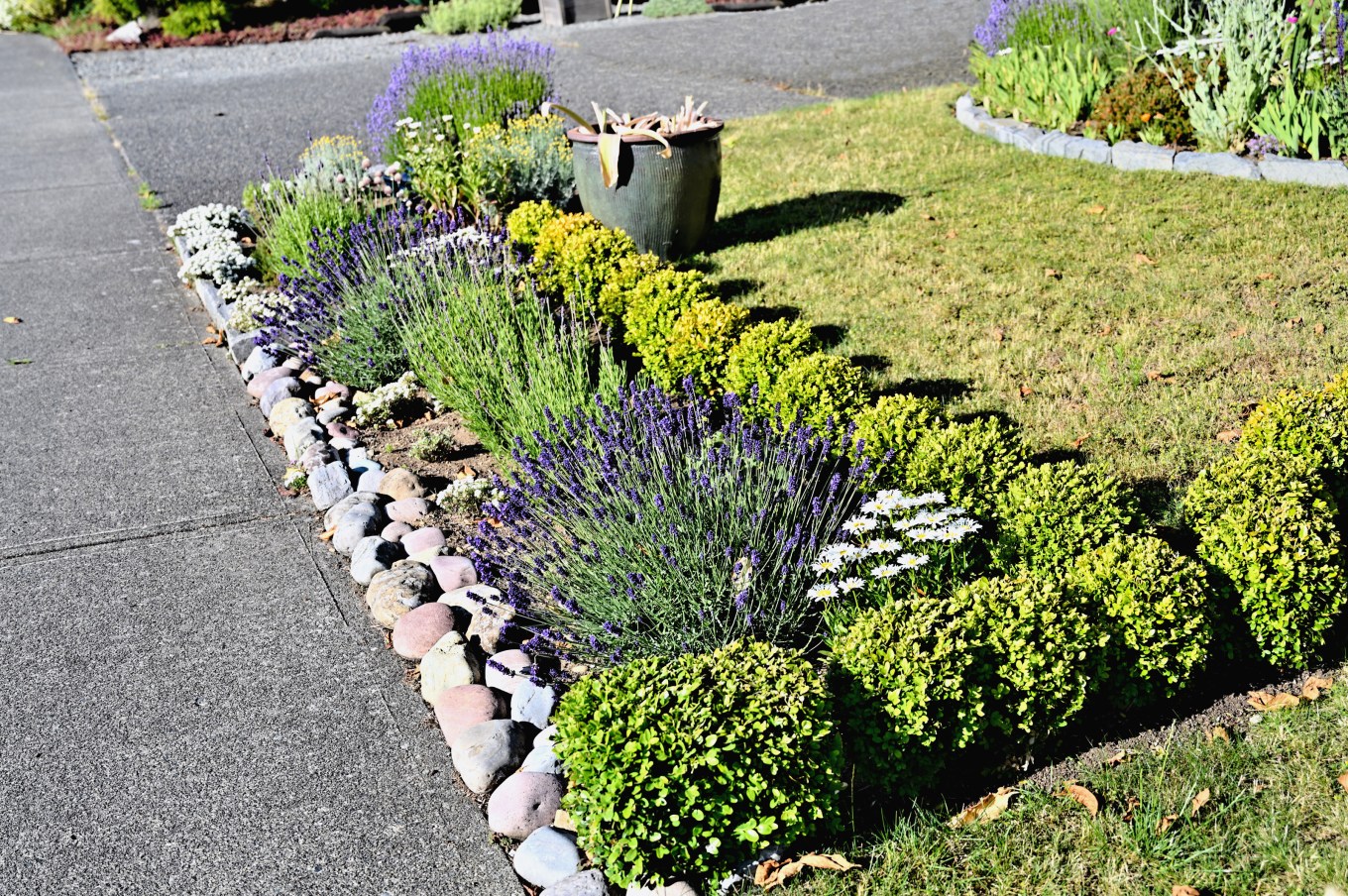
- Start small: Think of your first project as a test garden. It's a chance to get your hands dirty and learn what works. Begin with a manageable area. Of course, what’s manageable for one person may be overwhelming for another. Consider your schedule. If you can only spend a few hours outside, a few square feet might be more than enough. Similarly, if you have a smaller yard, you may want to limit the space you dedicate to your first experiment.
- Budget wisely: Your dream garden shouldn't be a financial nightmare. Set a budget that reflects your reality, not your aspirations. This will keep your project grounded and achievable. To build your budget, do some homework. Look at some landscaping designs, noting the elements you like best. Then, research the costs. From there, you can identify a few features and plants you want to start out with that won’t break the bank.
- Be patient: Plants take time to grow, and gardens take time to flourish. Consider each plant’s growing, flowering, and fruiting seasons. Your garden may not be as vibrant in March as it is in June, but that’s OK. Experience the joy of watching your garden evolve rather than expecting instant results.
- Consider marketability: “It helps properties sell faster if a property is maintained, and you’ve got nicely maintained bushes and trees, but it’s not over the top,” says Beth L. Graham, a certified residential appraiser in Lansing, Mich. “If you have extravagant landscaping, that can be a big maintenance item. Some people might just want a nice green yard for their pets or their kids. It’s a very personal thing."
#1 Assess Your Space for the Perfect Landscape Layout
Before you start digging, evaluate your outdoor area. Consider the potential of your exterior canvas. Here's a quick guide to identify the perfect garden spot:
- Walk the perimeter: Stroll around your property. Notice the shape, the slopes, and the way the sun hits different areas throughout the day. These clues will help you decide where to hang a hammock so you can cozy up with a book or where to plant those sun-loving petunias. Start to think about features like pergolas, tree removal, and drainage.
- Consider property lines: Understand the lay of your land. Where does your property end and the neighbors’ begin? Clarifying the boundaries will help you define the scope of your green masterpiece (and figure out where to add privacy hedges in the backyard).
- Check the conditions: Every property has its sweet spot. Is there a corner where the sun lingers a little longer? A patch that's shielded from harsh winds? Observing these microclimates within your space will help build your vision.
- Inspect structural features: Built-in or foundational aspects of your property could also shape your layout. Access to a hose or sprinkler system is important, especially if you live in a dry climate or your landscaping includes plants that need a lot of water. On the other hand, adequate drainage can protect you from a soggy lawn. That might require drainage pipes or a longer downspout on your gutter.
- Think about your ideal design: Now that you have a sense of your property, use your imagination. Do you want a veggie patch? A privacy wall? A playground for the little ones? Or perhaps a fire pit for those starry nights? Aligning your garden's design with your fantasy will make it truly yours.
#2 Designing the Blueprint for Your Dream Landscape
You’ve assessed your space to understand its unique characteristics, such as climate, and sunlight exposure. Now it’s time to map out your vision and sketch a basic plan that incorporates your desired features and plants.
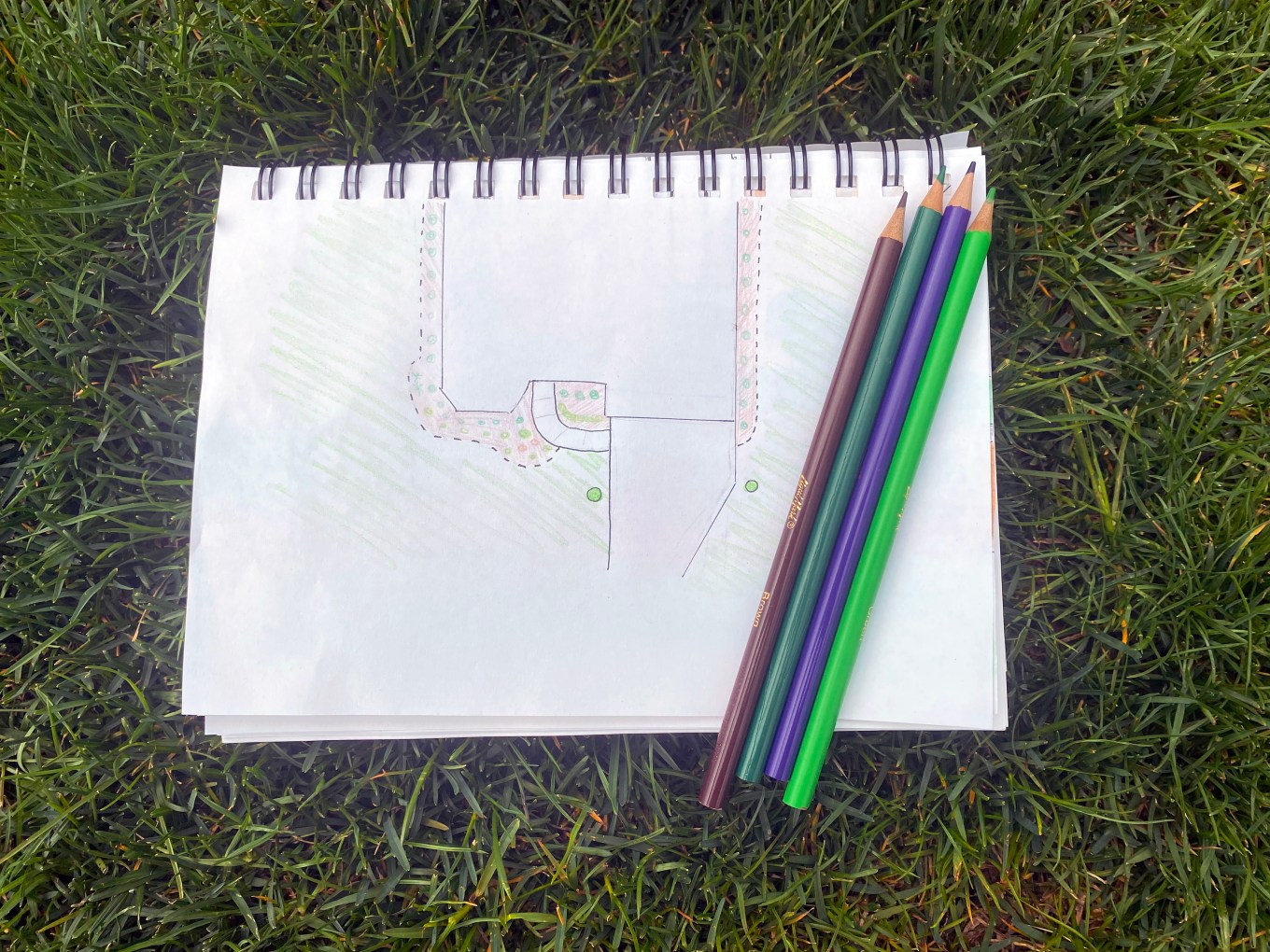
Here's how to get your vision on paper:
- Think big, then scale down: Jot down all your landscaping ideas and any features you want to include, no matter how grand. Think about vegetation, hardscaping, pathways, and more. Later, you can select what best fits your space and budget.
- Create a boundary blueprint: Draw the perimeter of your exterior space. Include any existing structures, permanent fixtures, or features that will remain part of the landscaping design. Your drawing doesn’t have to be perfect, but keeping your map approximately to scale will help when it’s time to plant. This is a good time to think about features like fences, decks, retaining walls, lighting, and curbs or edges.
- Make a mockup: Start plotting the features from your list onto the map. Get creative and explore different possibilities. Some aspects of the landscaping may seem obvious, like the privacy hedge will go on the boundary line between your yard and your neighbors’ yard. Other landscape features could be more flexible, like that succulent garden or a water fountain. Map out a few options so you can select the version that makes the most sense.
As you plan, think about where the sun hits during the day, the direction of the wind, and where shadows fall. These factors will influence plant placement and hardscape locations.
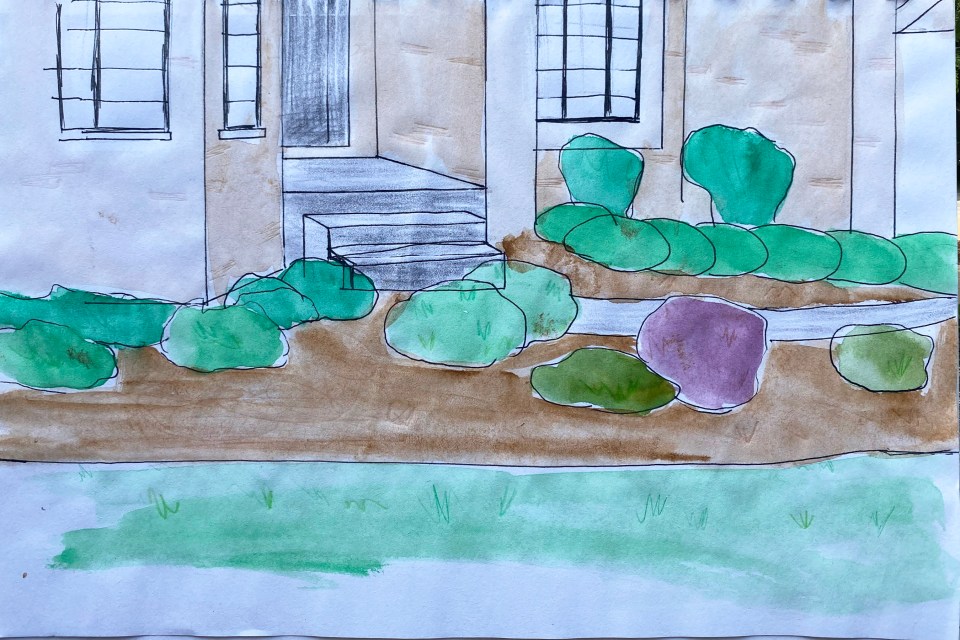
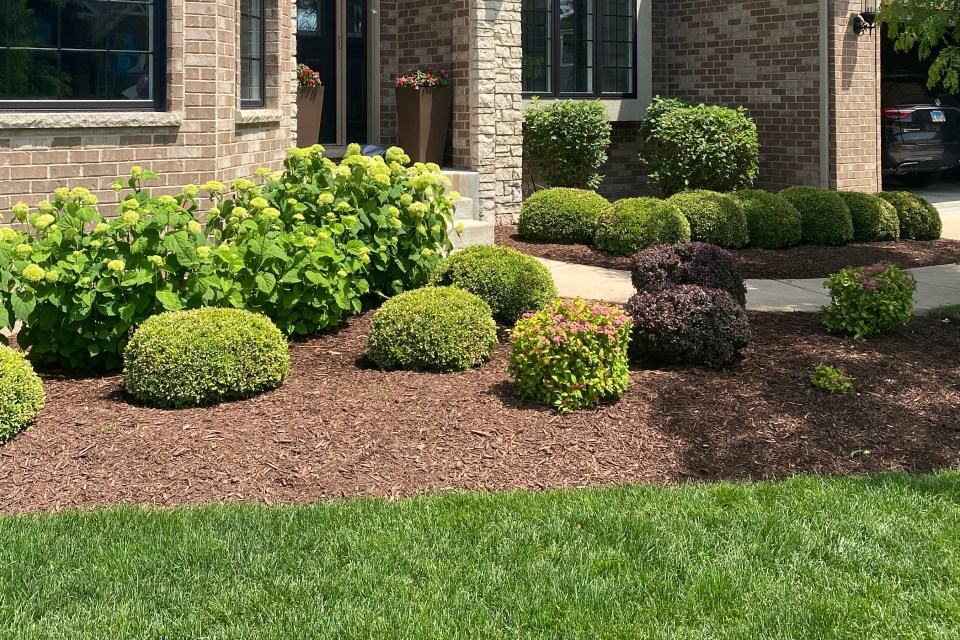
A blueprint illustration conceptualizing the landscaping in the front of a house compared to a picture of the result.
#3 Deciding on the Type of Planting Method
You have a landscape plan in place, but where do you go next? The type of planting method you choose can set the tone for your entire landscaping experience. Let's dig into the options.
Traditional Planting
This is the old-school way, where you dig, amend, and plant directly into the soil. It's a workout for you and the earth, but it's tried and true.
Raised Beds
If bending over isn't your thing or if you're dealing with less-than-ideal soil, raised beds could be your property’s best friends. They offer better drainage, fewer weeds, and a clear boundary for your green-thumb adventures.
Container Planting
Limited on space? No problem. Container gardening lets you grow your plants in pots, which allows you to garden just about anywhere. Plus, you can move your potted pals around to catch the sun or escape the wind.
Vertical Gardening
When you're short on space, why not grow up? Vertical gardening is all about taking advantage of upward space. Trellises, wall planters, and hanging baskets are your allies here, turning any wall or fence into a living-landscape art piece.
There’s no one size fits all landscaping. The type of planting method you choose might depend on your space, your soil, or your budget. Or you might select different methods for different landscape features and locations across your property.
#4 Picking Plants That Thrive in Your Environment
For successful landscaping, it’s key to select plants within your budget that will thrive in your local climate and soil conditions. Consider the amount of sunlight and water your plants will require, their growth habits, and how their color, texture, and height will fit into your overall design for visual harmony.
Choosing the right green companions for your garden is like setting up a successful blind date between Mother Nature and your backyard — it's all about compatibility. You don’t have to rely on guesswork. The USDA Plant Hardiness Zone Map will help you determine which plants may grow beautifully in the region where you live — and which ones may wither. Use the map by identifying the numbered zone your neighborhood is located in. Before you plant, check the seed packet or tag for growing zone information or look online.
#5 The Essential Tools for Every Landscaper
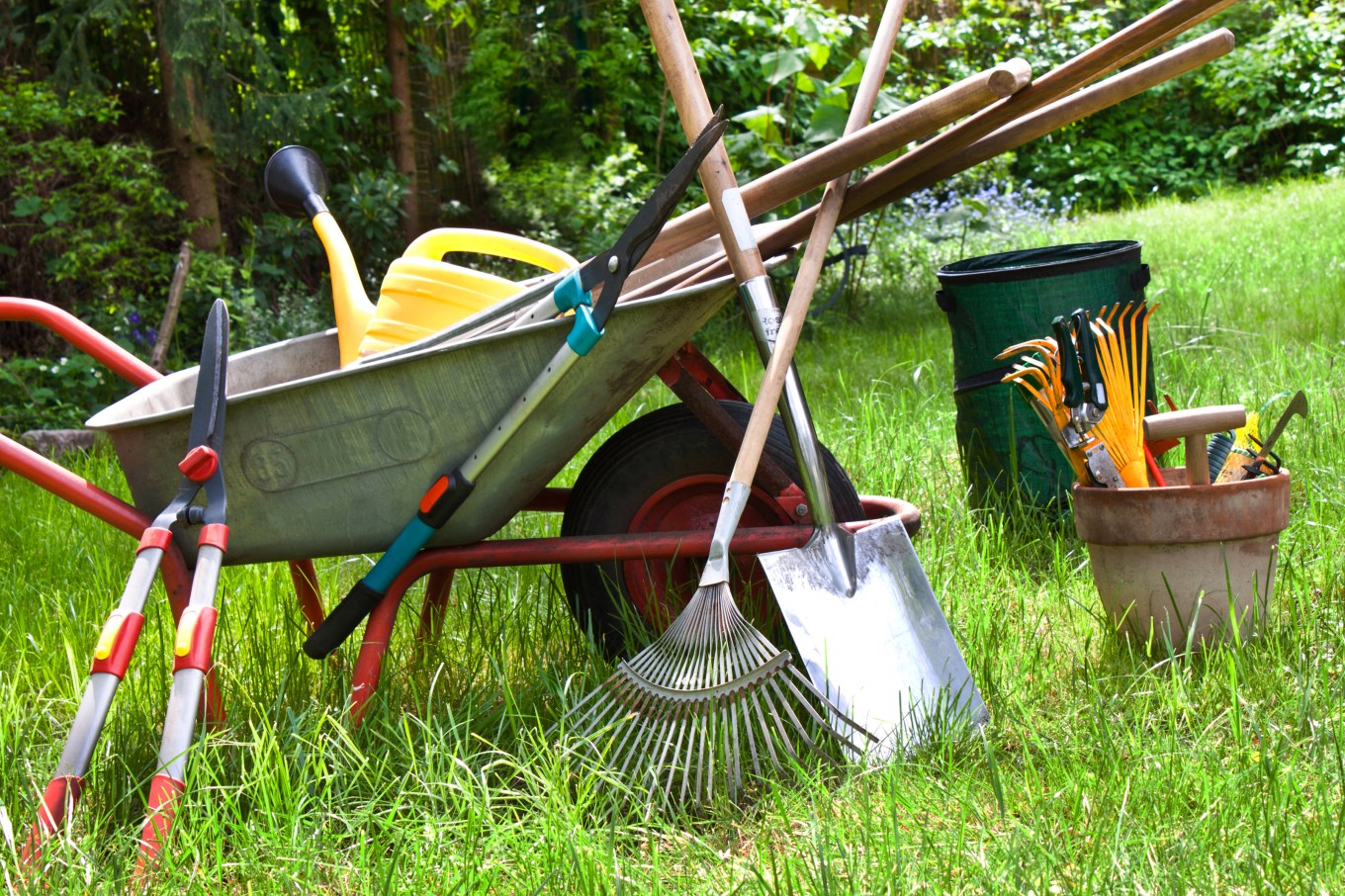
Every landscaper's toolkit should be as well-appointed as the gardens they tend. Starting with the basics, you'll need a trusty pair of gloves to protect your hands from thorns and bristles. But that's just the tip of the trowel. Here's a rundown of the must-haves:
- Trowel: Your trusty sidekick for planting and weeding
- Pruners: Sharp and reliable for precise cuts
- Rake: For clearing leaves and evening out the soil
- Spade: The heavyweight champion for digging and edging
- Wheelbarrow: Your garden's perfect vehicle for hauling soil and plants
- Hose with an adjustable nozzle: For those plants craving a drink
When it comes to landscaping equipment, quality counts. Investing in durable tools can save you time and money in the long run. While you're shopping, consider ergonomics to keep your gardening as pain-free as possible. For example, tools with wooden handles may be more durable but could be heavier and require more strength to carry.
#6 Preparing Your Landscape for Changing Seasons
Seasonal changes bring different types of weather, amounts of sunlight, and even pests. To prepare your outdoor space for varying seasonal needs, you’ll need to understand the basics of your changing climate.
If your region tends to get cold in the winter, you may need to mulch your plants to keep weeds away. If the vegetation dries out during the summer, expect to spend more time with your hose keeping itthe vegetation hydrated. In the sunny South, where winter barely makes an appearance, year-round mulching can conserve moisture during the longer warm periods and protect roots during the brief cooler spells. Plus, adjusting irrigation schedules to match the subtle changes in temperature and rainfall can keep your landscape thriving year-round. Regardless of where you live, most plants will appreciate a little TLC in the form of seasonal pruning for ongoing health and vigor.
Adjust for seasonal ebbs and flows by regularly reevaluating your landscape design and plant choices. Here are a few considerations for landscaping by season:
- Spring forward: When the frost retreats, spring bloomers take center stage. Try adding a splash of color with annuals that can be planted after the last frost date.
- Summer sizzle: As temperatures rise, you’ll want to have planted heat-tolerant plants and keep them well-hydrated. Mulching isn’t only for winter; it doubles as a summer lifesaver, keeping roots cool and conserving moisture.
- Autumn accents: Fall isn't just for pumpkin spice; it's prime time for planting perennials. The cooler weather is perfect for setting roots, giving them a head start for spring.
- Winter whispers: While your garden slumbers, you can spend time planning and adjusting. Some plants, like pansies and kale, can add life even in the chill.
#7 DIY or Professional Landscaping?
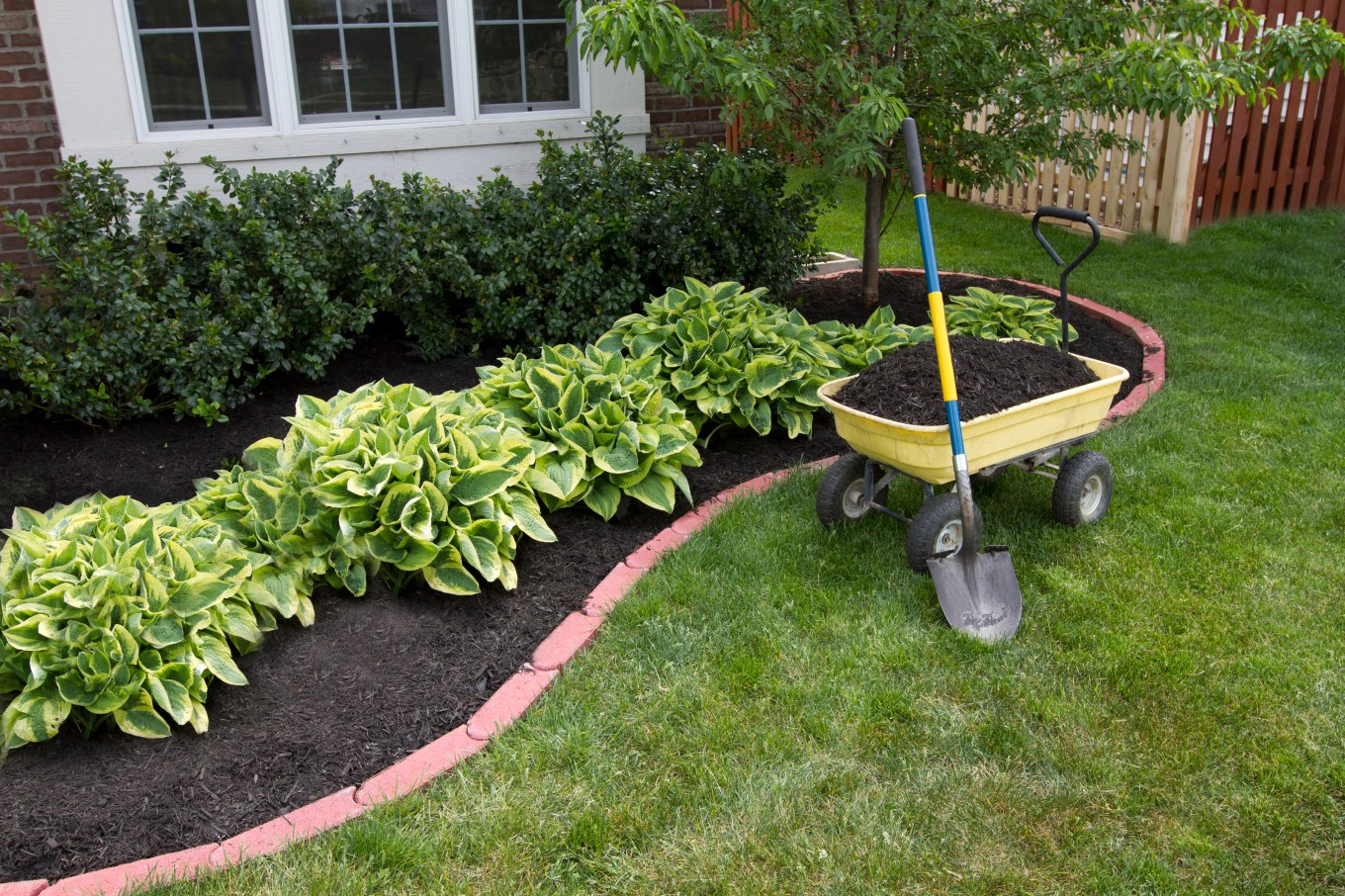
Starting your first landscaping project can be as thrilling as it is daunting. The decision about whether to go the DIY route or call in the pros can hugely affect the outcome of your outdoor oasis dreams -- and your wallet.
Landscaping professionals come with a price tag, but they also bring expertise and efficiency. Expect to pay from $5 to $20 a square foot for pro landscape support depending on the size of the space and the complexity of the project.
“You can go to Home Depot and rent almost any piece of equipment to tackle larger jobs, but just because you can rent an 8,000-pound excavator doesn’t mean you should,” says Alex Betz, CEO and founder of Plant by Number Design in Chester, N.J. He offers these tips on projects suited to DIYers and those that may benefit from hiring a pro.
Consider DIY Landscaping Advice and Projects
Start small: Let’s say you wanted to install a 20-foot-by-40-foot patio in your back yard. Maybe start a smaller by installing a firepit somewhere else. With a garden, start small with a 25-square-foot to 50-square-foot planting bed using four to five different plants and doing some research on arrangement and plant pairings.
Keep growth in mind: You can go to a garden center and buy small plants, but it’s important to know how large they’ll grow. If they’re planted too close together, you’ll have an overgrown garden, and some plants will overshadow others and even kill them off. You could invest $400 to $500 in plants and three years later, have to start from scratch.
Projects for DIYers: Good starting points include seeding or aerating your lawn; expanding an existing garden or starting a new, small garden; starting a vegetable garden or building a raised planting bed.
Think About a Pro for These Landscaping Projects
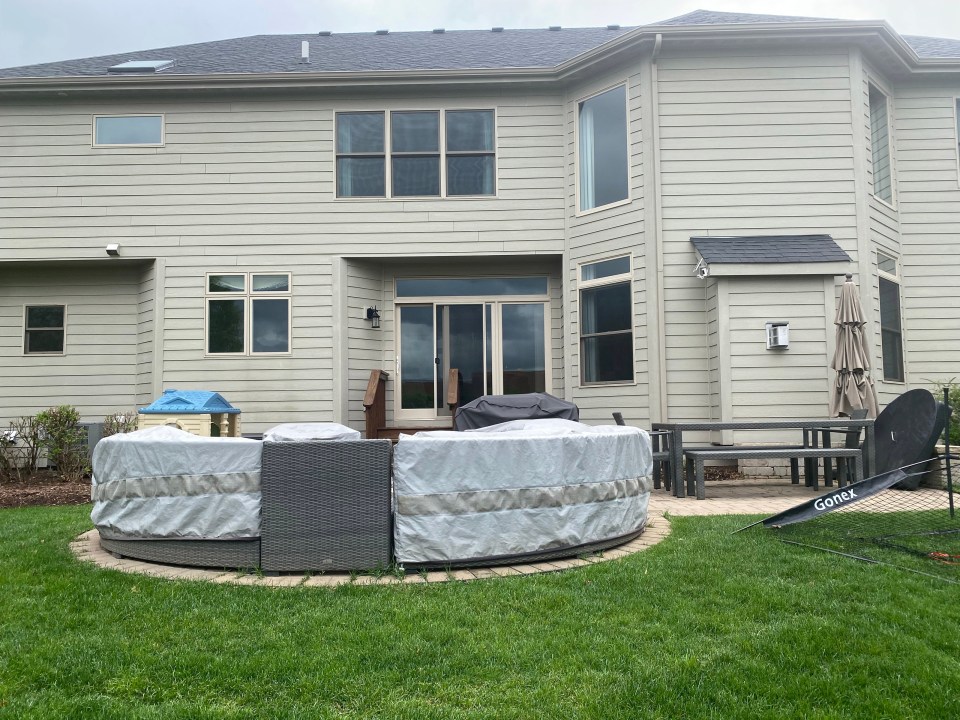
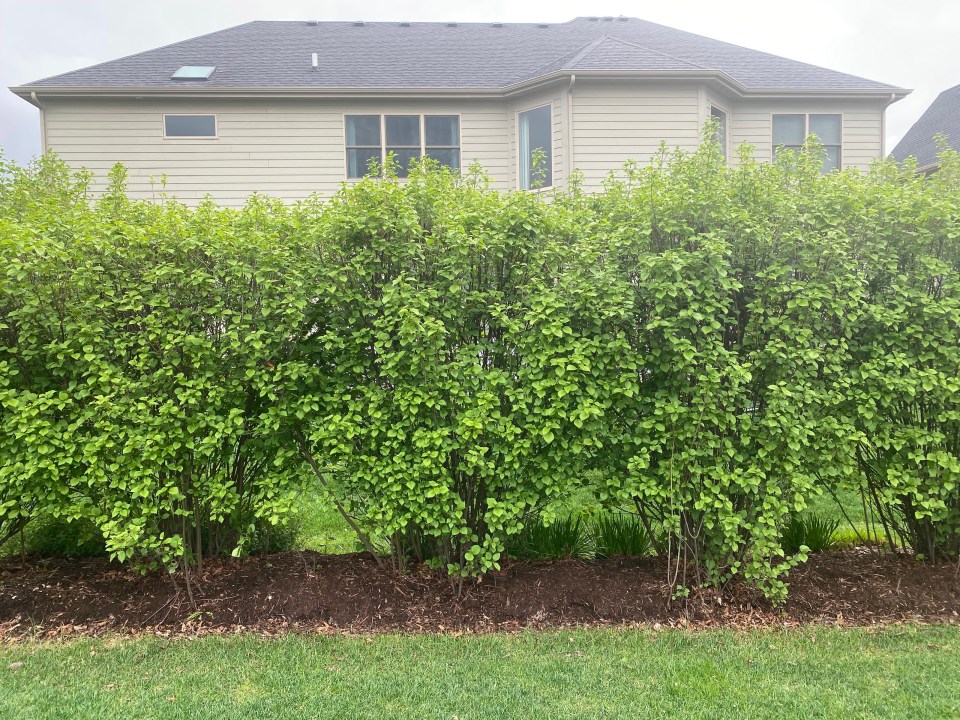
The difference in a yard between a privacy hedge or not having one.
Choosing and planting shrubs: Whether to DIY or hire a pro for shrubs depends on the size of the shrub and where you’re planting them. Be careful about planting around the foundation or too close to front windows. Some shrubs grow to six feet tall, and they’ll block light from your window.
Planting a privacy hedge: if you’re planning a large hedgerow and looking for a more manicured look, it’s good to bring in a pro who knows the growth habits of those types of plants and how to manage and prune them. Skip laurels are a popular hedging plant, but at maturity, they can grow 15-feet wide. If you hedge them improperly, you’ll remove some of the foliage and you won’t get that desired screening effect.
Choosing and planting trees: You don’t want to start out with a tree that will grow to be 25 feet tall and plant it 10 feet away from your house. You also don’t want to invest in more tree than you can manage. Start by digging a couple of test holes to help you choose the size. The digging test will also show you if the soil has a lot of rocks or the composition isn’t great. A professional will know how to amend the soil and will bring in equipment and remove rocks.
Whether you hire a pro or do the work yourself (or a combination of the two), expect to cover the cost of the plants and materials you select. Pricing will vary greatly depending on the features and flora you pick, but with a little creativity, you’ll find options no matter what your budget is.
A Luscious Landscape Design Awaits
Whether you're dreaming of a serene backyard oasis or a vibrant floral display, the journey to a vibrant landscape starts with one creative idea. Start small, plan thoroughly, and watch as your landscape flourishes under your care. Create a landscape plan that makes you excited to step outside and get digging.
